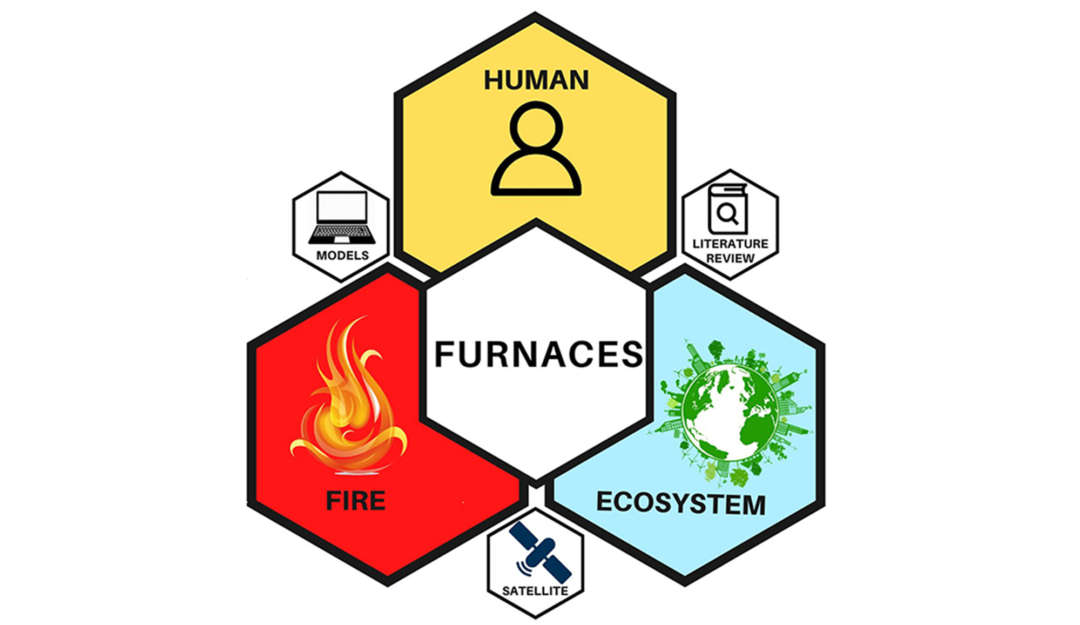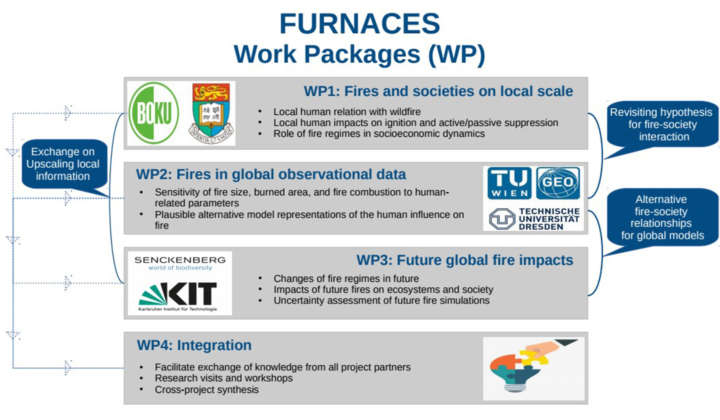Fire in the Future: Interactions with Ecosystems and Society – FURNACES
FURNACES (Fire in the Future: Interactions with Ecosystems and Society) is an interdisciplinary project about the future interactions between fire, ecosystems and society.
FURNACES is funded by “Deutsche Forschungsgemeinschaft (DFG)” from Germany and “Fonds zur Förderung der wissenschaftlichen Forschung (FWF)” from Austria.
In FURNACES we aim to
(1) improve our understanding how humans influence fires based on literature reviews and remote sensing data
(2) integrate an improved representation of humans and the associated uncertainty into vegetation models, and
(3) investigate the consequences of future changes in fire occurrence for ecosystems and societies.
This highly complex topic calls for an interdisciplinary approach. Scientists from Germany and Austria combine their expertise in fire ecology, social ecology, remote sensing, data science and vegetation modeling to better understand the local to global relationships between human, climate, vegetation and fire.


